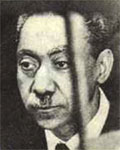
Special Islamic Movements in a Series: Part I Ikhwan Al-Muslimoon Islamic Movement [Archives:2001/05/Reportage]
January 29 2001

Yemen Times
The issue of Islamic movements worldwide has been raised extensively and frequently in the last few years. For us in Yemen, the killing of 4 tourists as a result of the Abyan Islamic Army’s kidnapping of a tourist group was the beginning of a long search into the truth behind Islamic movements in Yemen and their relationship with other Islamic organizations worldwide.
However, the recent USS Cole bombing by an Islamic group resulting in the killing of 17 US marines, made a study of these movements vital in order to assess possible threats from such movements. Hence, there were intensive efforts by investigation bureaus and western governments to know more about these movements and to understand their potential threat at all levels. Today, FBI, CIA, and many international police investigation units are doubling and tripling their efforts to understand the map of Islamic movements worldwide.
However, Islamic movements should not always be interpreted as negative, especially when in view of the fact that several Islamic movements are of peaceful nature and respectful history. Democracy and available civil rights have enabled several Islamic movements to evolve and operate in Yemen, some from within Yemen, and some as part of regional and global Islamic organizations.
During the last few months, Yemen Times received an enormous number of requests to publish a report on Islamic movements worldwide in general and in Yemen in particular. Hence, starting from this week, we start a series of articles about Islamic movements.
In this issue, we will be presenting the “Al-Ikhwan Al-Muslimoon” Islamic movement. Here we will be explaining how the movement started and evolved and will also be covering all aspects of the movement in terms of it’s activities and beliefs.
A Brief Historical Background on Al-Ikhwan Al-Muslimoon
The Ikhwan Islamic movement is the strongest and most popular Islamic movement in Yemen and in the world. The movement is based on calling upon Muslims to return to Islam in conformity with the Holy book of Allah (Quran) and to the prophet Mohammed’s (SAS) teachings. It calls for the implementation of all Islamic laws and regulations (Sharia) in all aspects of life. The movement stands against what it calls the extension of secularism into the Arab and Islamic world.

The movement was founded by Sheikh Hassan Al-Banna, who lived from 1906-1949. The actual movement was started in 1941 in Egypt, and initially had 100 members chosen by Al-Banna himself.
In 1948, Mahmoud Fahmi Al-Niqrashi, then the Prime Minister of Egypt, ordered the dissolution of the Ikhwan movement, confiscating its properties and arresting its main leaders. In December 1948, Al-Niqrashi was assassinated, and most fingers were pointed to the Ikhwan movement as the ones who planned and carried out the assassination. During his funeral, Al-Niqrashi supporters called for revenge against Al-Banna, who was assassinated less than three months later in February 1949.

On 23 July 1952, a number of prominent Egyptian army officers led by Mohammed Najeeb ignited the July Revolution with the assistance of the Ikhwan movement. However, after the success of the coup, the Ikhwan refused to participate in the forthcoming government unless they had some direct control over the state’s policies. Gamal Abdulnasser, by then the President of the Republic of Egypt , considered this condition to be a means of controlling the revolutionary government, resulting in tensions between the two parties until the government arrested many of the Ikhwan leaders and displaced thousands of activists of the Ikhwan movement on the grounds that it tried to assassinate Abdulnasser at Al-Manshiyye in Alexandria. The government executed six of the movement’s leaders, Abdulkadir O’da, Mohamed Farghali, Yusuf Tal’at, Hindawi Duwair, Ibrahim Al-Tayyib, and Mohamed Abdullatif.
During 1965-1966, the campaign against the movement gathered momentum resulting in the torture and execution of 3 of its leaders, including Said Qutb (1906-1966), who was considered the second leader of the movement after Al-Banna. Qutb was one of the most prominent Islamic intellectuals still respected by Muslims everywhere until today. He was arrested in 1954 and was in prison for 10 years until he was released upon the intervention of the then President of Iraq, Abdulsalam Arif. However, it was not long before he was imprisoned once again and faced the death penalty along with Yusuf Hawwash and Abulfattah Ismail, who were all executed in 1966.
There were also a number of leading Ikhwan figures that became prominent in other countries in the region. Dr. Mustafa Al-Sayyaghi (1915-1964) was among the founders of the Ikhwan movement in Syria. Sheikh Mahmoud Al-Sawwaf was the leading figure of the Ikhwan movement in Iraq. In Jordan, Abdullatif Abu Qawra represented the Ikhwan movement in 1945.
Coming to Yemen, the most prominent Yemeni Ikhwan leader was Mohammed Mahmoud Al-Zubairi, who founded Hizbullah in Barat (near Saada) in 1965, three years after the Yemeni revolution in the north.
Ideologies and Policies of the Ikhwan Movement
The connection of the Ikhwan Al-Muslimoon movement to Islam is all inclusive and never leaves any single issue in Islam without implementation. The Ikhwan movement believes in the importance of having their movement active globally through bureaus and representatives all over the world. Hassan Al-Banna sums up a the movement in one sentence “a Salafi identity, a Sunni movement, a Sufi fact, a diplomatic structure, a sport group, scientific and cultural league, an economic legacy, and a social vision.” Al-Banna states that the policy of Al-Ikhwan movement includes:
1- Staying away from disreputable issues
2- Avoiding arrogance and being dominated by others
3- Not being involved in any political or party-oriented establishments
4- Concentration on gradual growth and capacity building
5- Preference for practical work over propaganda and promotional publicity
6- Focusing on the younger generations (explaining the movement’s ideas to the youth)
7- Concentrating on rural areas in spreading the movement’s ideologies.
Al-Banna also described the special characteristics of the movement as follows:
– Divine, because the main objective of the movement is to let Muslims come closer to Allah.
– Global, because it targets all Muslims and non-Muslims alike, with no difference whatsoever of any human over the other, except for faith
– Islamic, because it is based on Islam.
Al-Banna also adds that the requirements that should be met by a faithful and committed member of the movement are that he must:
1- sincerely work on reforming himself so as to be:
– a person of high morals;
– healthy;
– educated;
– capable of understanding his creed appropriately;
– a devout worshipper of Allah
2- be capable of establishing a Muslim family that would appreciate and respect his ideology and also abide by all Islamic regulations and rules.
3- work on guiding people to do good deeds within society and fight all sinful behavior, by first serving as an example for others, and then by advising the people in the community.
4- Liberate the nation from foreign non-Islamic occupation or domination in either political, cultural, or ideological senses.
5- Reform the government so as to make it truly Islamic and apply the rules and regulations of Islam in all aspects of life.
6- Work on uniting the Islamic nations under one rule, so as to return to the once strong Islamic state with all its previous glory.
7- Spread Islam all over the world, so as to avoid sedition or conspiracy among the Muslim nation, and to make Islam the global and only religion in the world.
Ideologies and Creeds: related Concepts of Al-Ikhwan
Al-Ikhwan used and adapted the Salafi movement’s concepts of:
– calling for the use of practical evidence to convince non-Muslims to adapt Islam and muslims to strengthen their faith in their religion
– Stressing the importance of the main sources of Islam’s regulations, the Holy Quran and the prophet’s life, so as to refrain from any sort of worshipping of any other God but Allah and to arrive at the ultimate level of faithfulness.
The Ikhwan movement was influenced by the movement of Sheikh of Mohammed bin Abdulwahhab, the Sinoosiyye movement, and the movement of Rushd Ridha. These three movements are mostly an extension of Ahmed bin Hanbal’s teachings.
Al-Banna had adapted all the previously Islamic concepts in his movement, and added to them what was needed in his own time and environment. He stood against all the various currents flowing at the time in the Arab region and particularly in Egypt.
To be continued next week:
Al-Ikhwan Al-Muslimoon in Yemen
——
[archive-e:05-v:2001-y:2001-d:2001-01-29-p:./2001/iss05/report.htm]


